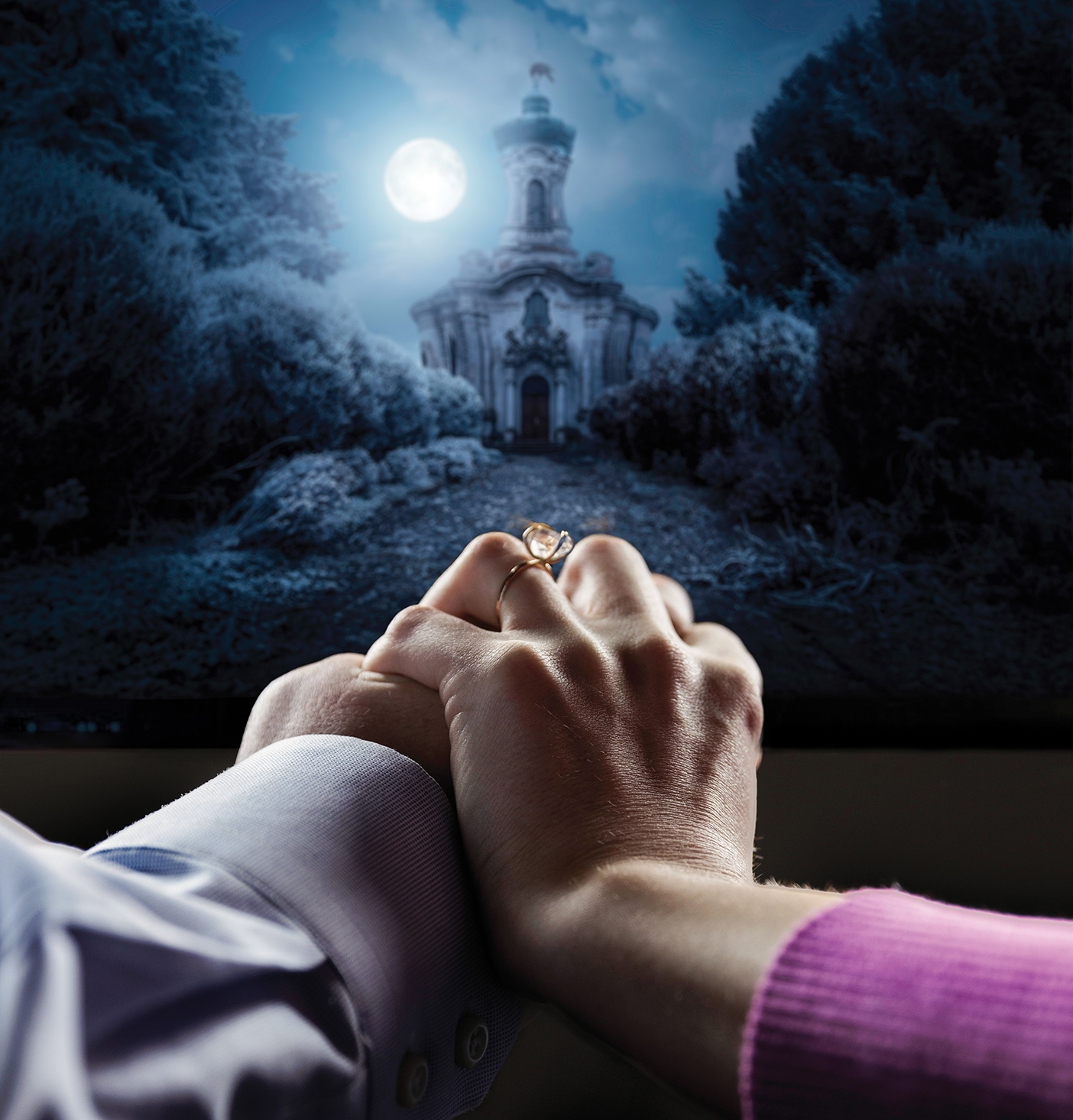Researchers use scary movies to study fear and support in marriage relationships.

If you’ve ever watched a scary movie with your spouse, you might have grabbed his or her hand and felt your fear shrinking a bit. But you probably didn’t notice that the size of your pupils also shrank.
This pupil effect is a gold mine for researchers like Tyler C. Graff (PhD ’21), Steven G. Luke (BA ’03), and Wendy Church Birmingham (BS ’06), who measure the widening and constricting of pupils for insights into relationship dynamics. In a recent study published in the journal PLOS One, the researchers found that supportive relationships significantly buffer stress for spouses while “ambivalent” relationships do not.
Researchers studied 166 couples who had been married 10 years on average. They first had each subject characterize his or her marriage as either supportive or “ambivalent.” An ambivalent relationship has lots of positives but enough negatives that the positives tend to get outweighed.
Birmingham, associate professor of psychology, explains: “Say you get a promotion at work, and your spouse says, ‘Wow, that’s so awesome! I’m so happy for you.’ You’re feeling good, but what if next comes, ‘Do you really think, though, that you are the right person for the job? Other people handle stress much better than you do.’ Now you’re doubting yourself. That’s an ambivalent relationship.”
Even with high positivity, says Birmingham, the negatives mean spouses don’t get the benefits of the positives, like lower blood pressure and its protection against heart disease.
The researchers used infrared eye-tracking to measure couples’ pupils as they watched horror movie clips together while holding hands. More dilation means more fear and vice-versa. “We found that individuals in ambivalent marriages experienced more fear reaction than those in supportive marriages,” says Graff.
1
Physical touch matters. The research team reviewed data and found “there’s something about that physical contact—taking someone’s hand, putting your arm around them—that conveys your emotional support,” Graff says. The research also shows having one’s spouse physically present conveys support, but it’s not as powerful as when it’s accompanied by reassuring touch.
2
The findings implicate ambivalent relationships as even worse for physical health than purely negative ones, says Birmingham: “With a purely negative relationship, I know what I’m going to get and I either habituate to it or get out. With ambivalence, I’m always on edge.” Without the stress-buffering that a quality marriage provides, “incessant acute stressors” can lead to greater vulnerability to disease, especially heart disease, she says. The quality of a marriage matters most, not being married per se. “Tons of research shows that being married is generally better than not being married,” she says, but that doesn’t hold true for low-quality marriages.
3
Improving your marriage to reduce ambivalence matters because if you’re living with height- ened reactivity, your blood pressure is likely higher and cardiovascular problems can show up down the road, says Birmingham. Younger couples specifically should be aware because 25-year-olds aren’t generally looking for blood-pressure problems. “If your BP is already elevating at 25, you’re going to have problems,” she says.
4
If negatives that keep couples off balance exist in a relationship, what can be done? Birmingham recommends avoiding the blame game, asking instead, “Do I need to make some changes?” She adds, “Changing our own behavior improves our spouse’s life. We serve our spouse when we fully support him or her, bringing all of the related benefits. Serving helps us become more like Christ, and the more Christlike we are, the better our marriages will be.”














